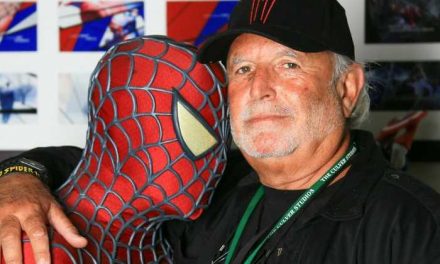 By Christopher M James
By Christopher M James
Anyone’s life ending stage will probably become chaotic. Illness consumes one’s ideas. Strength wanes, memory fades the ability to do the daily activities like working or shopping for food declines. Upon retirement, the business will go on. People will dedicate the remaining of their lives to stress free existence.
In 1996, Nam June Paik (1932-2006) a multimedia sculptor suffered a stroke that shortened his ability to create new installations; however, his career was far from over. His work were being planned to be displayed, latest pieces were still being made-up, and the existing works are for sale at galleries. Besides, a series of sculpture supposedly by Paik, denied by the artist himself, were put up for sale.
Unfortunately, it was Paik who was charged with two lawsuits, which his lawyers chose to resolve since he is not thinking mentally competent to give evidence at trial. Paik’s nephew and estate executor, Ken Hakuta said. “You can see this as people taking advantage of a senile artist. He was sick.”
The court cases were eventually resolved. Had Paik upheld a documentary record for all his work, this could not have happened. Good record keeping, unluckily, is not one of the traits of a highly successful artist.
Reduce brain function, though, may prove disastrous for those artist whose business is run totally out of his or her mind. As Dr. said “Just getting old is hard.” The director of the Woburn, John Zeiselof of Massachusetts-based organization Artists for Alzheimer’s stated, “Bills don’t get paid; things don’t get put away. Most creative types have things lying around anyway and, when they develop dementia, it becomes much harder to organize.”
For all these, problems that may occur are:
The artworks that have been loaned to a gallery, museum or collector are forgotten. The beneficiary may interpret it as present or gifts, sometimes selling the works.
Artworks that are consigned to a gallery are forgotten. Galleries, also, sometimes forget to pay the artists.
Photos that are only certified for commercial use are also forgotten. A lawyer with an arts practice in New York City, Elliot Hoffman said “Postmortem royalties, with few exceptions, tend to taper off, but sometimes royalty payers forget to pay the artist or the artist’s estate or heirs. Sometimes, they just stop paying and wait to see if anyone complains.”
Constituents involved in creating several edition, like mock-ups, proofs, maquets, molds or drawings, are failed to notice by the artist. However, it is still used or sold by the publisher, foundry, or fabricator.
Artworks that are not documented or compiled with photographs or written data (title, size, year, medium), which can cause difficulty of attribution. An artist is usually considered to be the best judge of his own work (even though there are cases where some have been dishonest, denying early pieces they now dislike or, in the case of Giorgio di Chirico, intentionally misdating works) but, when the artist suffers loss of memory (like the case of Nam June Paik) or passed away, the problem of attribution is exaggerated or magnified. To determine who created the work, and when was the work created has been more drawn-out in an expensive process.
Hoffman said, “Artists, by definition, are not business-minded”. This is neither true nor a description only, but there have been many instances of artists who do not mind to keep good records of their artworks, loans, licenses and consignments, leading to problems and lawsuits during an artist’s lifetime and beyond.
There might be less need for lawsuits and authentication committees if an artist kept better records on their works and careers. Concerning that goal, the Joan Mitchell Foundation (155 Avenue of the Americas, New York, NY 10013, 212-524-0100, http://www.joanmitchellfoundation.org ) has established a grant program allowing the artists to document their work. By hiring an archivist and paying for a computer (if needed) and the creation of an image and text database rather than giving money to an artist directly, the foundation will underwrite this process. As the executive director, Carolyn Somers said, “If you just give artists money, they might not spend it on archives, while they are alive, artists can do their own catalogue raisonné.”
Christopher James – fine art student who loves to write about art. Christopher is currently studying at the Drawing Academy, discovering traditional drawing techniques http://drawingacademy.com and has already completed the Web Art Academy “Hot to Oil Paint” online course http://art.webartacademy.com











